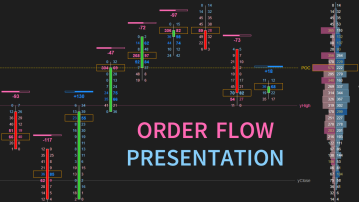Overview
Scalping in trading is a short-term strategy that involves making numerous small trades to capture minor price fluctuations. It requires a specific set of skills, characteristics, and strategies for success.
What does Scalping require for a Succesful Scalper?
1. Quick decision-making skill: Scalpers need to make split-second decisions to capitalize on fleeting market opportunities.
2. Strong discipline: Maintaining a disciplined approach is crucial to sticking to a predefined trading plan and avoiding emotional reactions.
3. Good risk management: Effective risk management is essential to protect against potential losses in the fast-paced environment of scalping.
4. Attention to Detail: Scalpers must pay close attention to market indicators, trends, and news to identify favorable entry and exit points.
5. Technological Proficiency: Fast and reliable internet connections, advanced trading platforms, and ordering tools, are necessary for executing trades promptly.
Pros and Cons of Scalping:
Pros:
Cons:
- Quick Profits: Scalpers aim to profit from small price movements, leading to potential rapid gains.
- Reduced Market Exposure: Scalping minimizes the time a trader's capital is exposed to the market, lowering the risk of significant losses.
- Adaptability: Scalping can be applied in various markets and asset classes.
- Transaction Costs: The frequent buying and selling in scalping can lead to higher transaction costs.
- Stressful: The fast-paced nature of scalping can be mentally demanding and stressful.
- Requires Time: Successful scalping often requires significant time commitment, making it unsuitable for all traders.
Scalping Strategies:
1. Market-Making Scalping:
In this strategy, known as "market-making," scalpers aim to profit from the bid-ask spread. They simultaneously post bids and offers for a specific stock, attempting to capture small price differentials.
Suitability: Effective on mostly immobile stocks with substantial trading volumes and minimal price changes.
Challenges: This strategy is highly challenging due to competition with market makers for shares on both bids and offers. Profits are marginal, and any stock movement against the trader's position can result in losses exceeding the initial profit target.
2. Price Movement Scalping:
This strategy involves purchasing a large number of shares and capitalizing on minimal price movements. Traders in this style enter positions for several thousand shares and wait for small price fluctuations, often measured in cents.
Requirements: Highly liquid stocks are essential to facilitate the smooth entry and exit of 3,000 to 10,000 shares.
Challenges: Rapid decision-making is crucial, and success depends on the ability to read and react to market movements swiftly.
3. Traditional Method Scalping
Closer to conventional trading methods, this strategy involves entering a specific number of shares based on system-generated setups or signals. Positions are closed promptly as soon as the first exit signal is generated, often near the 1:1 risk/reward ratio.
Approach: Relies on predefined setups or signals, emphasizing a disciplined trading plan.
Challenges: Traders must have a solid understanding of their trading system and the discipline to execute trades according to predetermined criteria.
Indicators for Scalping:
1. Moving Averages: Identifying trends and potential reversal points by smoothing out price data.
2. Bollinger Bands: Detecting overbought or oversold conditions by analyzing price volatility.
3. Relative Strength Index (RSI): Measuring the speed and change of price movements to identify potential reversal points.
4. Stochastic Oscillator: Identifying overbought or oversold conditions based on closing prices, aiding in predicting potential trend reversals.
The Bottom Line:
In the dynamic realm of scalping, choosing the right strategy depends on a trader's risk tolerance, expertise, and the specific market conditions they navigate. Whether it's market-making, price movement, or a more traditional approach, mastering these scalping strategies requires a combination of skill, discipline, and adaptability.
Take a closer look at our Scalping Packages/Indicators, designed to kickstart your journey into the world of scalping. This comprehensive offering combines cutting-edge strategies with a meticulous stop-loss approach, ensuring precision and effective risk management for your trading endeavors.






![[Package] Deliberate AnaCute Trading](https://nizaco-media.nyc3.digitaloceanspaces.com/catalog/product/cache/8ff38408075023c595809570dc58e4db/_/p/_package_deliberate_anacute.jpg)


![[System] Cosmik Z-TP](https://nizaco-media.nyc3.digitaloceanspaces.com/catalog/product/cache/8ff38408075023c595809570dc58e4db/c/o/cosmik_z-tp_1.png)
![[Sister Brand] King Kong Trading RK](https://nizaco-media.nyc3.digitaloceanspaces.com/catalog/product/cache/8ff38408075023c595809570dc58e4db/k/i/king_kong_trading_rk_nz_.png)
![[Sister Brand] Fleet Barracuda Scalping](https://nizaco-media.nyc3.digitaloceanspaces.com/catalog/product/cache/8ff38408075023c595809570dc58e4db/_/p/_package_fleet_barracuda_scalping.jpg)
![[Sister Brand] Fibar Scalping](https://nizaco-media.nyc3.digitaloceanspaces.com/catalog/product/cache/8ff38408075023c595809570dc58e4db/f/i/fibar_scalping.jpg)
![[Package] Snow Eagle Trading](https://nizaco-media.nyc3.digitaloceanspaces.com/catalog/product/cache/8ff38408075023c595809570dc58e4db/_/p/_package_snow_eagle_trading.jpg)


![[Package] Agile Piranha Scalping](https://nizaco-media.nyc3.digitaloceanspaces.com/catalog/product/cache/8ff38408075023c595809570dc58e4db/_/p/_package_agile_piranha_scalping.jpg)


![[Package] Lightning Leopard Trading](https://nizaco-media.nyc3.digitaloceanspaces.com/catalog/product/cache/8ff38408075023c595809570dc58e4db/_/p/_package_lightning_leopard_trading.jpg)

![[Sister Brand] Noble Cloud](https://nizaco-media.nyc3.digitaloceanspaces.com/catalog/product/cache/8ff38408075023c595809570dc58e4db/n/o/noble_cloud.png)





![[Sister Brand] Solar Wind RK](https://nizaco-media.nyc3.digitaloceanspaces.com/catalog/product/cache/8ff38408075023c595809570dc58e4db/s/o/solar_wind_rk.jpg)






























